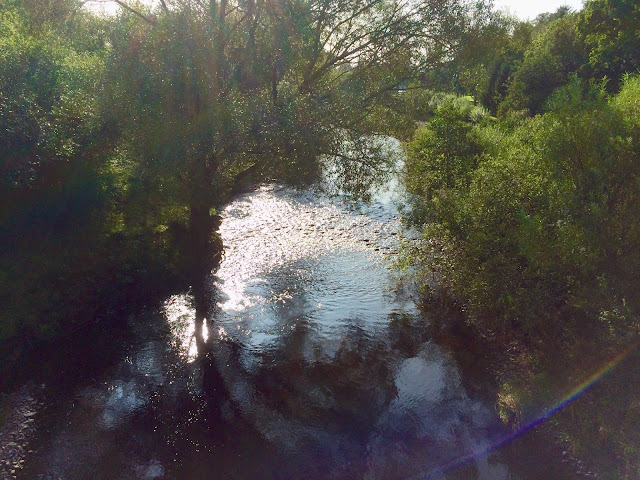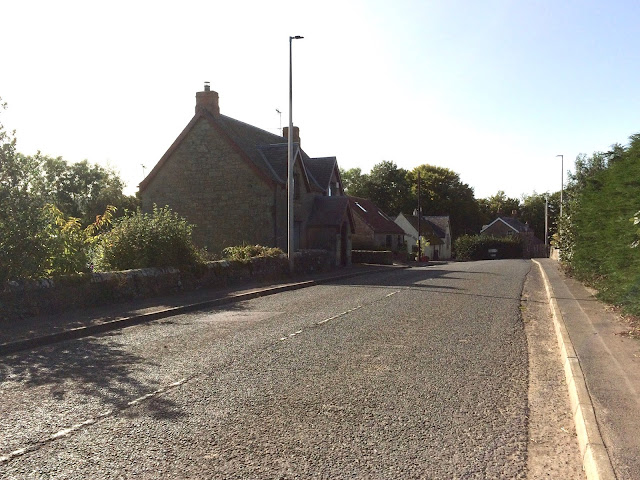This is a long but rewarding circular cycle from Paxton to the villages of Preston and Edrom, crossing the beautiful Whiteadder Water several times. This cycle is about 28 miles and will take just over 2hrs.
1. Starting from The Cross Inn head out of the village passing the church on your right. Turn left after the church and at the end of this road turn right onto the B6460 in the direction of Greenlaw.
 |
| The Cross Inn, Paxton |
 |
| Paxton Church |
2. Proceed along this road for about 5 miles before taking a right turning towards Allanton and Chirnside. Cycle along this road, down the hill and through the village of Allanton. Continue over Allanton Bridge and up a long hill before eventually arriving at Chirnside and the junction with the A6105.
 |
| Allanton |
 |
Allanton Bridge
|
4. Turn right towards Duns, travelling through the village and passing the war memorial on your right and the village hall on the left. As you leave the village you will see a row of white cottages on the left and on a small hill to the right is an old parish graveyard.
5. Just past the graveyard the road bends to the left and over The Whiteadder Water via
Preston Bridge. There is a small parking are on the left and it is worth stopping and walking down to the banks of the river, where on one side of the bridge the water tumbles over the rocky river bed and on the other side flows calmly on its way towards Chirnside.
 |
| View From The Bridge |
6. Cycle over the bridge and carry on the A6112 for a while before ascending a steep hill. After the hill take a left hand turning, not signposted down a small country lane. Proceed down this small road passing some cottages on the left until you reach a junction. Turn left towards Chirinside and continue along this road, round a sharp right bend( do not turn left) and on towards a farm and some cottages. Turn right and continue along this small road before travelling uphill and turning sharply to the left at the top.
(If you have time turn right instead into the village of Buxley and turn left through the gates of Manderston House. This beautiful house and gardens are well worth a visit).
7. Proceed along this road for some time before reaching the village of Edrom. At the junction turn left and continue on this road thought the village and back out into the country. Continue along this road to the hamlet of Blanerne. Do not take a road on the right but continue over the Whiteadder Water, past some houses, up a small hill and on until you reach a junction with the B6355.
 |
| Whiteadder Water At Blanerne |
8. Turn right heading back to Chirnside. At the junction with the A6105 turn left towards Berwick-Upon-Tweed and continue back through Chirnside turning right at The Waterloo Arms onto the B6437. Carry on this road, down the hill and over the Whiteadder Water and through the village of Allanton. Proceed uphill through the village and continue before turning left towards Broomdykes.
 |
| Whiteadder Water From Allanton Bridge |
9. After passing through Broomdykes Farm and some brightly coloured cottages on the right you will arrive at a T junction. Turn left and head down a steep hill, passing an egg farm on the left. At the bottom follow the road as it curves to the right and continue uphill passing a farm and cottages on the left and an excellent farm shop on the right. Proceed along this road passing a cemetery on the right before arriving in the village of Hutton.
(NOTE. If you turn left at the bottom of the hill this will take you downhill to the beatuful and peaceful Blueststone Ford across the Whiteadder Water).
10.The road bends to the right before approaching a junction. Turn left and start heading back towards Paxton. Continue along this road, passing Clarabad Farm before eventually travelling downhill to arrive back in Paxton Village.





















































